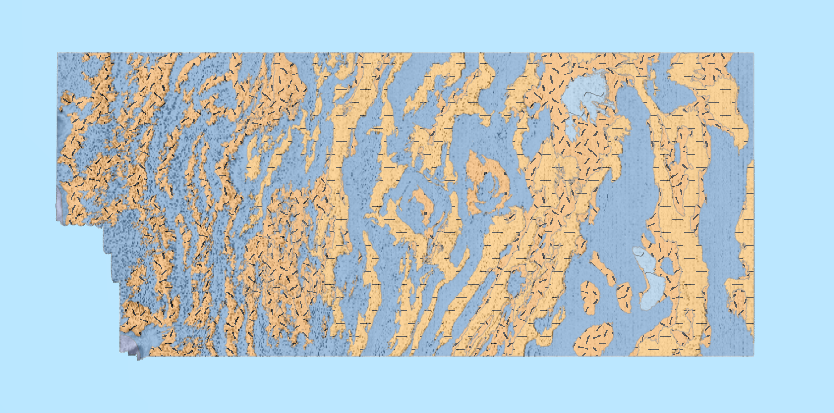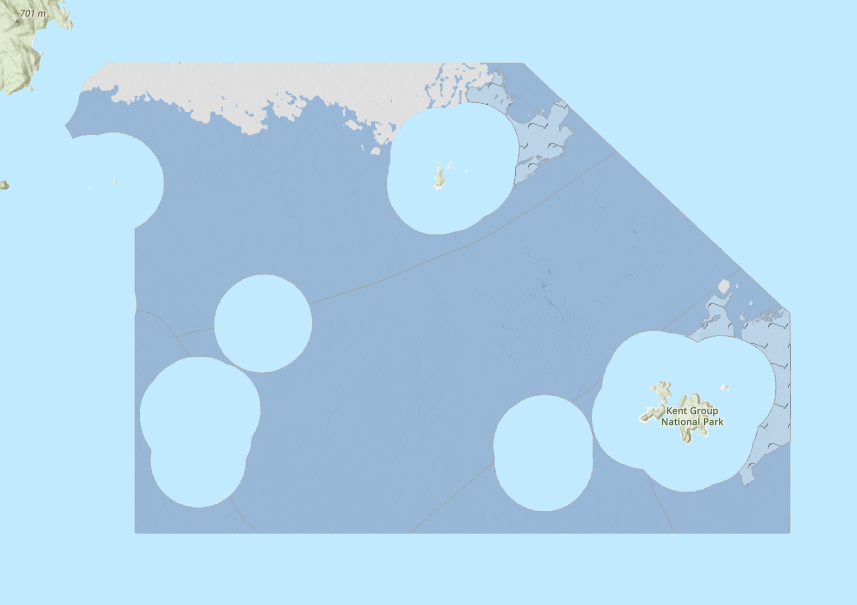Spatial
Type of resources
Keywords
Publication year
Service types
Topics
-
The pace, with which government agencies, researchers, industry, and the public need to react to national and international challenges of economic, environmental, and social natures, is constantly changing and rapidly increasing. Responses to the global COVID-19 pandemic event, the 2020 Australian bushfire and 2021 flood crisis situations are recent examples of these requirements. Decisions are no longer made on information or data coming from a single source or discipline or a solitary aspect of life: the issues of today are too complex. Solving complex issues requires seamless integration of data across multiple domains and understanding and consideration of potential impacts on businesses, the economy, and the environment. Modern technologies, easy access to information on the web, abundance of openly available data shifts is not enough to overcome previous limitations of dealing with data and information. Data and software have to be Findable, Accessible, Interoperable and Reusable (FAIR), processes have to be transparent, verifiable and trusted. The approaches toward data integration, analysis, evaluation, and access require rethinking to: - Support building flexible re-usable and re-purposeful data and information solutions serving multiple domains and communities. - Enable timely and effective delivery of complex solutions to enable effective decision and policy making. The unifying factor for these events is location: everything is happening somewhere at some time. Inconsistent representation of location (e.g. coordinates, statistical aggregations, and descriptions) and the use of multiple techniques to represent the same data creates difficulty in spatially integrating multiple data streams often from independent sources and providers. To use location for integration, location information needs to be embedded within the datasets and metadata, describing those datasets, so those datasets and metadata would become ‘spatially enabled’.
-
Abstract: Spatial predictions of seabed sediments based on samples in the Australian Marine Samples (MARS) database provide environmental baseline information used in the management of Australia’s marine jurisdiction, offshore resource development, and marine protected areas. The MARS database holds 14204 samples, distributed unevenly across the Australian Exclusive Economic Zone (AEEZ). As such, interpolations of seabed samples are often required for understanding target regions between collection sites. Data quality in the MARS database also varies, with data quality control resulting in the exclusion of over 7,000 samples, most of which were dredged samples. Dredged samples are thought to lower the accuracy of the spatial predictions produced from the database. In this study we examined whether these excluded dredged samples should for spatial predictions by assessing whether the dredged samples decreased or increased the accuracy of the resulting spatial predictions of seabed mud content, and whether the dredging method used altered the accuracy of the resulting prediction. We confined our analyses to two contrasting areas in the AEEZ: the Southwest Region (407 total samples; 150 dredged) and Petrel Region (534 total samples; 297 dredged). We compared the accuracy of interpolated surfaces of mud content generated from QC’d samples with surfaces generated with samples from different dredge types (benthic, pipe, chain bag and unspecified). In the Southwest region samples included 73 benthic, 19 pipe, 41 chain bag, and 17 unspecified dredged samples. In the Petrel region samples included 46 pipe and 251 unspecified dredged samples. Spatial predictions of seabed mud content were made using Inverse Distance Weighting (IDW) and Ordinary Kriging (OK). Predictive errors were assessed based on leave-one-out cross-validation in terms of relative mean absolute error (RMAE). The effects of dredged samples on the predictive error were analysed using paired Mann-Whitney tests. For sediment samples in the Southwest region, including benthic dredge samples in the prediction reduced the accuracy of IDW by 1.79% in terms of RMAE. Including chain bag dredge samples increased the accuracy of IDW with a small difference in RMAE of 0.47%. The difference in accuracy of IDW was insignificant for the unspecified type samples, all dredged sample types and pipe dredged samples. Including samples with all-dredged type and unspecified type dredge samples improved the accuracy of the OK predictions over the QCed samples in the Southwest region with a small effect on RMAE of 0.68% for all-dredged samples and 0.65% for unspecified type dredged samples. The difference in accuracy of OK was insignificant for benthic dredged, pipe dredged and chain bag dredged samples in the Southwest region. No significant effects on the accuracy of IDW in the Petrel region were found for all the tested dredged sample types (unspecified type, pipe dredged samples, and all-dredged samples). The difference in accuracy of OK in the Petrel Region for samples with all dredged and with unspecified dredged samples was insignificant. Including pipe dredged samples increased the accuracy of OK in the Petrel with a negligible effect on RMAE of 0.02%. In summary, the inclusion of dredged samples produced minimal effects on the accuracy of spatial predictive models. Effects were not consistent across region or dredge type, but findings showed dredged samples had surprisingly little effect on the accuracy of the predictions Including the dredged samples would require reprocessing the spatial predictions for the AEEZ based on the MARS database, so as the findings are only based mud sediment data from two regions caution should be taken to generalise these findings to other sediment types and to the entire Australian marine margin. Further testing is required to verify these findings for other regions and sediment types and identify whether future spatial predictions can include some of this extra data without a loss in accuracy. This paper was submitted/presented at the 22nd International Congress on Modelling and Simulation (MODSIM2017) conference, 3-8 December 2017
-
This OGC Web Map Service (WMS) contains geospatial seabed morphology and geomorphology information for Flinders Reefs within the Coral Sea Marine Park and are intended for use by marine park managers, regulators, the general public and other stakeholders. This web service uses the data product published in McNeil et al. (2023); eCat Record 147998.
-
This OGC Web Map Service (WMS) contains geospatial seabed morphology and geomorphology information for the Beagle Marine Park (South-east Marine Parks Network) and is intended for use by marine park managers, regulators and other stakeholders. This web service uses the data product published in Nanson et al. (2023); eCat Record 147976.
-
The SDE Topographic Product Database (STOPO) contains all the vector data from the previous TOPO250K, TOPO500K, TOPO_1M, TOPO_2_5M, TOPO_5M and TOPO_10M databases. SBAGD is a historic database comprising the GEODATA TOPO 250K Series 3 data and any updates that were made from 2008-2013. This vector data represents major topographic features and has been sourced through many programs such as the National Topographic Information Coordination Initiative (NTICI). The topographic data complies with the Topographic Data and Map Specifications for the National Topographic Database & NTMS Series 1:250 000 & 1:100 000 scale topographic map products version 6.0. To use this dataset please contact the Spatial Platforms team (eGIS), spatialplatforms@ga.gov.au, and obtain an SDE login for use within your selected GIS software.
-
This OGC Web Map Service (WMS) contains seabed morphology and geomorphology information for a subset area of Zeehan Marine Park (South-east Marine Parks Network) and is intended for use by marine park managers, regulators and other stakeholders. This web service uses the data product published in McNeil et al. (2023); eCat Record 148620.
-
This OGC Web Feature Service (WFS) contains seabed morphology and geomorphology information for a subset area of Zeehan Marine Park (South-east Marine Parks Network) and is intended for use by marine park managers, regulators and other stakeholders. This web service uses the data product published in McNeil et al. (2023); eCat Record 148620.
-
This ESRI map (web) service contains seabed morphology and geomorphology information for a subset area of Zeehan Marine Park (South-east Marine Parks Network) and is intended for use by marine park managers, regulators and other stakeholders. This web service uses the data product published in McNeil et al. (2023); eCat Record 148620.
-
This ESRI map (web) service contains geospatial seabed morphology and geomorphology information for the Beagle Marine Park (South-east Marine Parks Network) and is intended for use by marine park managers, regulators and other stakeholders. This web service uses the data product published in Nanson et al. (2023); eCat Record 147976.
-
This OGC Web Feature Service (WFS) contains geospatial seabed morphology and geomorphology information for the Beagle Marine Park (South-east Marine Parks Network) and is intended for use by marine park managers, regulators and other stakeholders. This web service uses the data product published in Nanson et al. (2023); eCat Record 147976.


